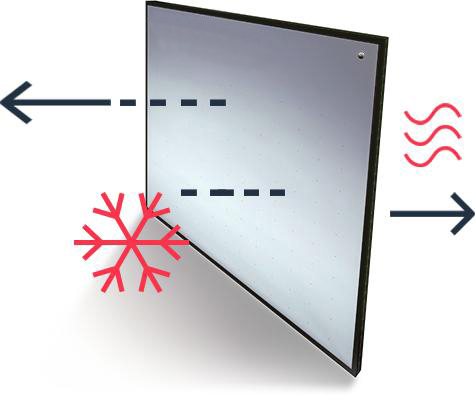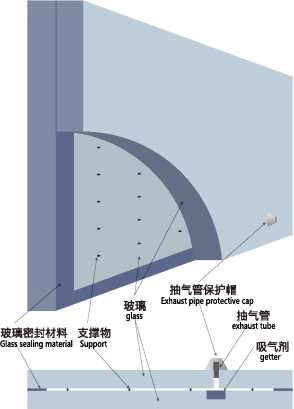The Evolution of Vacuum Glass Technology
Vacuum glass technology represents a significant advancement in building materials, providing superior insulation and energy efficiency. This article traces the evolution of vacuum glass technology from its early conceptual stages to its current applications and future prospects.

The concept of vacuum technology dates back to the 17th century when Italian physicist Evangelista Torricelli demonstrated the presence of vacuum and atmospheric pressure using a mercury barometer in 1643. This foundational experiment paved the way for future explorations into vacuum technology [3].
The Invention of the Vacuum Flask
In 1893, British physicist and chemist Sir James Dewar invented the vacuum flask, which utilized the principles of vacuum insulation to maintain the temperature of its contents. Dewar's invention, initially intended for scientific purposes, later found widespread commercial use as the thermos flask [1].
Early Conceptualization of Vacuum Insulated Glass
The first conceptualization of vacuum-insulated glass (VIG) can be traced back to 1913, when German scientist A. Zoller proposed the idea. Zoller's concept involved using a vacuum layer between two panes of glass to enhance thermal insulation. However, the practical implementation of this idea faced significant technological challenges at the time [4].
Mid-20th Century Developments
The period between 1850 and 1900 saw considerable advancements in vacuum technology, driven by the needs of scientific research and industrial applications. This era laid the groundwork for further developments in vacuum-insulated glass. However, it wasn't until the mid-20th century that significant progress was made in the field of VIG [5].
The Long Gestation Period
The history of VIG is notable for its unusually long gestation period. From the initial concept proposed by Zoller in 1913, it took several decades for the technology to mature. This prolonged development period can be attributed to the complex technical challenges involved in creating and maintaining a vacuum between glass panes, as well as ensuring the durability and reliability of the seals [2].
Technological Breakthroughs
Significant technological breakthroughs in the latter half of the 20th century and early 21st century finally brought vacuum glass closer to commercial viability. Advances in materials science, manufacturing processes, and sealing techniques played a crucial role in overcoming the challenges that had hindered the development of VIG.
One of the key innovations was the development of durable and reliable edge seals that could maintain a vacuum over long periods. These seals, made from advanced materials, prevent gas infiltration and ensure the longevity of the vacuum layer.
Commercialization and Modern Applications
In recent years, vacuum glass has transitioned from a niche technology to a commercially viable product with a wide range of applications. Modern vacuum glass consists of two or more glass panes separated by a vacuum layer, with tiny support pillars to prevent the panes from collapsing under atmospheric pressure. This structure provides excellent thermal and acoustic insulation, making it ideal for various applications.
Residential and Commercial Buildings
Vacuum glass is increasingly used in residential and commercial buildings to improve energy efficiency and indoor comfort. Its superior insulation properties help reduce heating and cooling costs, contributing to significant energy savings. Additionally, vacuum glass provides excellent soundproofing, enhancing the acoustic comfort of indoor spaces [6].

Historic Building Retrofitting
One of the notable applications of vacuum glass is in the retrofitting of historic buildings. Preserving the original appearance of these buildings while improving their energy efficiency is a significant challenge. Vacuum glass, with its slim profile and high insulation value, provides an effective solution that meets both aesthetic and performance requirements.
Transportation and Aerospace
The transportation and aerospace industries have also adopted vacuum glass for its lightweight and high-performance characteristics. In vehicles, vacuum glass improves thermal insulation and noise reduction, enhancing passenger comfort. In aerospace applications, the lightweight nature of vacuum glass contributes to improved fuel efficiency and overall performance.
Future Prospects
The future of vacuum glass technology looks promising, with ongoing research and development aimed at further enhancing its performance and expanding its applications. Some of the key areas of focus include:
Improved Manufacturing Processes
Advances in manufacturing processes are expected to reduce the cost of vacuum glass, making it more accessible for a broader range of applications. Automation and precision engineering are likely to play a significant role in achieving this goal.
Enhanced Durability and Lifespan
Researchers are continually exploring new materials and sealing techniques to improve the durability and lifespan of vacuum glass. Enhanced durability will make vacuum glass an even more attractive option for long-term applications, reducing the need for replacements and maintenance.
Integration with Smart Technologies
The integration of vacuum glass with smart technologies is an exciting prospect. Innovations such as electrochromic coatings, which allow the glass to change its transparency in response to electrical signals, can enhance the functionality of vacuum glass in various applications. These smart glass technologies can provide additional benefits, such as improved privacy and energy management.
Conclusion
The evolution of vacuum glass technology is a testament to the power of innovation and perseverance. From its early conceptualization in the early 20th century to its current applications, vacuum glass has undergone significant advancements, overcoming numerous challenges along the way. Today, it stands as a highly effective solution for improving energy efficiency, acoustic comfort, and overall performance in various applications.
As research and development continue to drive further improvements, vacuum glass is poised to play an increasingly important role in the built environment and beyond. Its unique combination of benefits makes it a valuable addition to modern building materials, offering a sustainable and efficient solution for the future.
 English
English Russian
Russian




